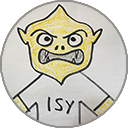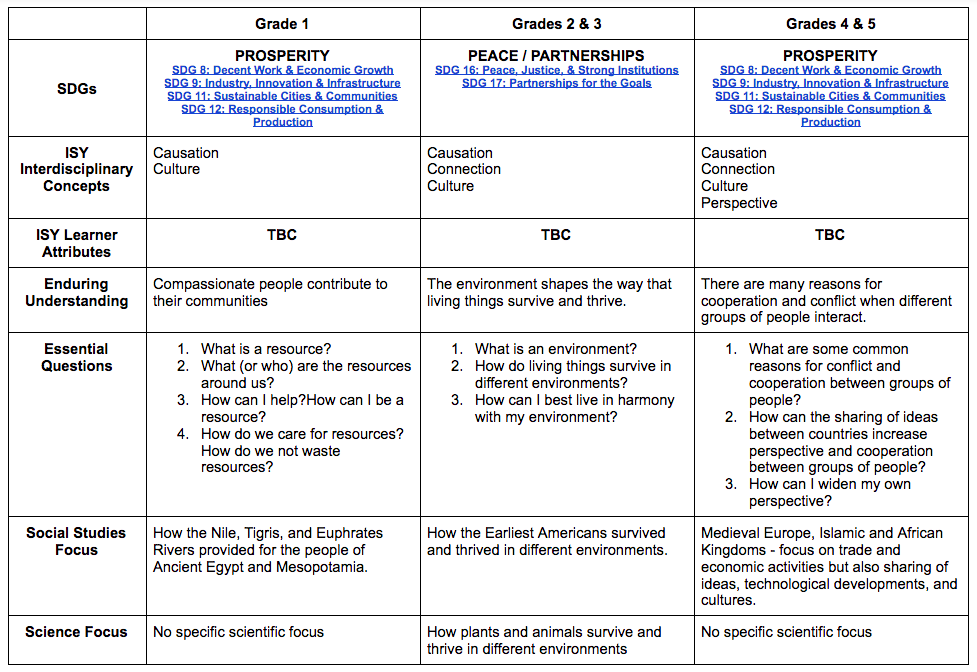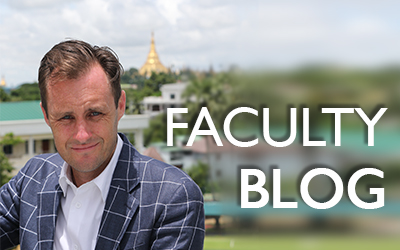ISY Elementary School Faculty Blog
Knowledge

Mike Simpson
December 3, 2021
With MAP testing set to resume in February, I wrote this to provide some perspective for our families:
Someone a lot smarter than me is supposed to have said a long time ago that knowledge is a belief tied down by understanding.
As an elementary school student, I believed that 5 is a prime number. I believed this because it was my understanding that all odd numbers are prime numbers. If I got this question in a test, I would get this question right. But because my correct answer was based on this misunderstanding, it is not true that I knew 5 is a prime number – I just got lucky!
If I was asked if 9 is a prime number I would also answer yes based on my misunderstanding that all odd numbers are prime numbers. I definitely didn’t know that 9 is a prime number – because it isn’t!
My belief that all odd numbers were prime numbers was strengthened by the fact that, when quizzed on prime numbers by my teachers, I always got more than half of the questions right (half the questions would be even numbers) and more than half right when more odd numbers than not happened to be prime numbers.
The more quizzes I did, the more questions I got right. I would remember more of those weird odd numbers like 27 and 35 which were marked wrong when I marked them as prime. My belief developed into ‘all odd numbers are prime numbers unless my teacher tells me otherwise.’ But even if I got really lucky and answered all the questions in a quiz correctly, I couldn’t say that I knew if any number was really a prime number.
Fortunately, while we were dividing our odd numbered class into equal groups, a teacher observed that, despite quiz scores that would suggest otherwise, I did not know what a prime number was. She took my beliefs about prime numbers seriously and helped me understand the properties of a prime number. Now I know that 5 is a prime number but 9 is not. I now know what a prime number is because my beliefs about prime numbers are now based on correct understanding.
My prime number story popped into my mind this week as we plan to resume MAP testing in February. These tests will provide us with useful information about our students in Math and English Language Arts that we can use to further develop our students’ knowledge and skills in these core curriculum areas. However, in isolation, these multiple choice tests are not necessarily suited to identifying the understanding or misunderstanding that a student has based their answers on.
A student with a clear understanding of prime numbers might incorrectly answer a question through carelessness while a student like me might answer that same question correctly based on a misunderstanding or memory. This is not to say that MAP testing data is not valuable or reliable – it is both of these things if it is analyzed in light of the understandings and misunderstandings of students which are visible to teachers through classroom observations and assessments. MAP testing provides an independent set of data that teachers can combine with classroom data to learn more about a student’s understandings and misunderstandings.
A school that takes seriously the understandings and misunderstandings of students is far more likely to develop knowledgeable students who will be able to apply and adapt that knowledge to the future. The learning process should therefore be designed to make student understandings and misunderstandings visible so that teachers can develop or correct them to create student knowledge.
Starting with our Reggio Emelia-inspired Early Elementary classrooms and continuing through to graduation, our ISY interdisciplinary curriculum framework is designed to allow teachers to make student understandings and misunderstandings visible.
A safe, compassionate learning environment is vital and students are given the opportunity to freely share what they believe about a topic. Teachers are able to use these beliefs to guide student learning in such a way that student understandings or misunderstandings about a topic will be uncovered. And once they are uncovered, teachers can use them to help students develop key knowledge that will stay with them beyond a MAP test and well into the future.
Susan Sauvé Meyer. Ancient Philosophy: Plato & His Predecessors [MOOC]. Coursera. https://www.coursera.org/learn/plato
Gardner, Howard. Unschooled Mind: How Children Think and How Schools Should Teach. Basic Books, 2011.
ES COLLABORATIVE AGENDA
Please add any questions, items that come to mind to this ES Collaborative Agenda. The idea is that once we have a few things to discuss that can’t be addressed by email, we will meet.
February MAP Testing
Regardless of whether we are online or in-person, we are planning to run MAP testing for Grade 2 to Grade 5 students in February.
Students will be assessed in Math, Reading, and Language Usage.
Student will be able to opt out of testing is their families feel that it would cause unnecessary stress.
Quarter 2 Schedule
Here is the link to the ES Quarter 2 Schedule which is also available on the Elementary School Faculty Pages.
Friday Emails + Quarter 2 Offline Learning
No detailed subject emails next week but we will send out a short email (I will give you a paragraph to use) to send out our Offline Learning Activities PDFs.
In these folders you will find the Offline Learning Activity templates that will be converted to a PDF to be emailed out every Friday.
We will need to update these offline learning activities to reflect what we are doing in Quarter 2. Please update them by 12pm Thursday MMT.
ISY Annual Compassion Conference
Friday, March 4
This will be organized under the umbrella of ISY Definition of Compassion: The will and understanding to respect and value the identity, culture, perspective, and experience of others in acting to make a positive difference to their lives.
In addition to a key-note speaker addressing resilience in young people (Jake Bailey) and an ISY student panel presenting on LGBTQ+ issues, we will have Cathy Berger Kaye and 3 of her consultants presenting to us on Documentar, story telling in the curriculum, and the dangers of a single narrative (along the lines of this very popular TED Talk)
Teacher workshops will be an important part of this conference.
Teacher workshops might relate to any of our ISY Inclusive Practices and will be organized under the following strands:
-
- Inclusion
- Service
- Diversity
Workshops can focus on anything under these strands and we are particularly interested in workshops on the following:
-
- Responsive Classroom Strategies
- Science of Learning – memory, etc.
- Teaching Creativity
- Integrating Technology
Our TIF team of Ian and Lindsey will be helping us put this day together and will be popping into classes from time to time to get ideas and encourage teachers. Please reach out to them if you have an idea you would like some support with – whether you intend to present it or not on March 4.
From the Library
Lindsey and Christian in the library would be very happy to help get books to you that you might want to read to your class or have your students read. These books can be scanned so they can be used online so let them know if you are looking for something.
Semester 1 (Q1 + Q2) Reports
These reports will not be going out before Semester 1 finishes on January 21. I will get a timeline out closer to the time.
In the meantime, just think about your Subject Blurbs: a summary of what you have covered in Q1 + Q2.
Here is an ES Subject Blurbs folder with grade level documents to draft your blurbs in. The instructions are at the top of the document but reach out if you have any questions.
Interdisciplinary Units
Curriculum Maps and Q2 Scope and Sequence
Here is where you can find our Curriculum Maps (updated for Q1 using report subject comments).
Here is where you can find our Q1 Scope and Sequence. Please link your planning to the Scope and Sequence. I have done this for PE and Culture and Communication to give you an example. We want to give you some autonomy as to how you organize your planning and resources but your planning needs to be in an ISY Shared Drive.
Here is where you can find our Q2 Scope and Sequence.
To fill out this year’s Q2 Scope and Sequence, you might want to refer to the skills you focused on this time last year in these Q2 scope and sequence documents:
PK-1 Q2 Scope and Sequence 2020-2021
2-3 Q2 Scope and Sequence 2020-2021
4-5 Q2 Scope and Sequence 2020-2021
Please also link your planning to the Scope and Sequence.
If you have not already, please check off the standards that you intend to cover in your subject in Quarter 2. Please make sure there is an ‘x’ in the second column of any standard you will cover in these Grade Level Standards Checklists.
These documents are really taking shape and will be a valuable resource in years to come.

Faculty Song
From our TIFs
Here are a curated list of helpful links for students and families as we begin the year. These videos can be helpful as you share information with them.
- Overview of Apps used in the ES (Video Link) (Slides Link)
- Sign in to your Chrome Web Browser (Video Link)
- Download Chrome (Website Link)
- Download Chrome on iPad (Video Link)
- Sign in with Google to Seesaw (Video Link)
- Seesaw Parent Login (Video Link)
- How to get into Kids A-Z (Video Link)
- Freckle Login (Video Link)
Previous Elementary School Posts
Elementary School Blog – August 26th, 2022
ISY Elementary BlogBACK TO SCHOOLSandy Sheppard , Elementary School Principal2nd September 2022Thank you for another wonderful week. Next week we will welcome our parents onto campus to share information on our learning here at ISY. The event will start in the Gym...
Elementary School Blog – August 26th, 2022
ISY Elementary BlogGreat start to the school year!!!Sandy Sheppard , Elementary School Principal28 August 2019Wow! it is truly amazing to be back together on campus. Sometimes I have to pinch myself; I feel so lucky to be back in the ISY family. After the challenges...
Elementary School Faculty Blog – June 3, 2022
While we have one more week to go, this will be our last Faculty Blog post for the year.
Elementary School Faculty Blog – May 27, 2022
ISY Elementary School Faculty BlogLooking Back Mike Simpson May 27, 2022From October 23, 2020.... In case you are wondering why you are tired, we went online 219 days ago. We all know we are doing our best…. even when we are not at our best! Check in. How am I? What...
Elementary School Faculty Blog – May 20, 2022
As we come to the end of the school year, I am looking back on blog posts from the last two years.
Elementary School Faculty Blog – May 13, 2022
We have Student Review Meetings coming up at the end of the month.

